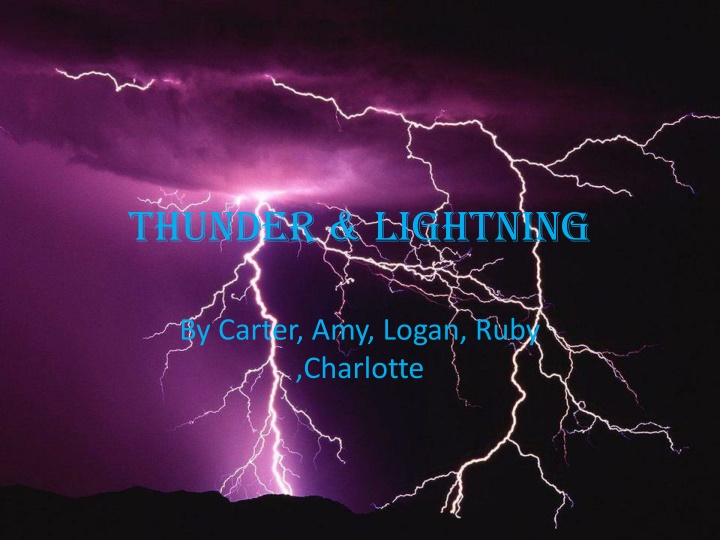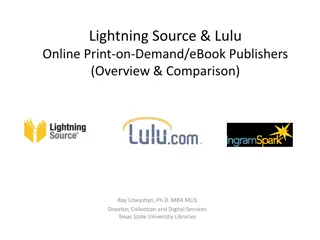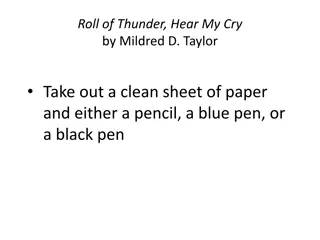
Fascinating Facts About Thunder and Lightning
"Explore the intriguing phenomena of thunder and lightning, from how they are formed to safety tips during storms. Learn about the causes of thunder, how to recognize signs of lightning, and interesting random facts. Gain insights into the science behind these natural occurrences and understand why lightning is hotter than the sun."
Download Presentation

Please find below an Image/Link to download the presentation.
The content on the website is provided AS IS for your information and personal use only. It may not be sold, licensed, or shared on other websites without obtaining consent from the author. If you encounter any issues during the download, it is possible that the publisher has removed the file from their server.
You are allowed to download the files provided on this website for personal or commercial use, subject to the condition that they are used lawfully. All files are the property of their respective owners.
The content on the website is provided AS IS for your information and personal use only. It may not be sold, licensed, or shared on other websites without obtaining consent from the author.
E N D
Presentation Transcript
Thunder & Lightning By Carter, Amy, Logan, Ruby ,Charlotte
Thunder and lightning. Thunder and lightning. Thunder is formed by lightning. When it flashes it creates a hole in the clouds called a channel when it closes it makes a loud noise we know as thunder. . What to do in a storm Stay indoors if not stay out in the open Stay away from trees or forests
How to know lightning is near If you see dark clouds, then lightning could be present, but the best thing you can do is to listen for thunder. If you hear thunder, then you need to go indoors or get in a car. Don't be outside, where lightning could strike! If your hair stands on end or your skin starts to tingle, lightning maybe about to strike. Get down on your hands and knees and keep your head tucked in. Do not lay flat, because it can give lightning a better chance of strike you.
What causes thunder? Thunder is caused by lightning. When a lightning bolt travels from the cloud to the ground it actually opens up a little hole in the air called a channel. Once then light is gone the air collapses back in and creates a sound wave that we hear as thunder. The reason we see lightning before we hear thunder is because light travels faster than sound
Random facts A bolt of lightning lasts on average for about one 10,000th of a second but could light a 100 Watt light bulb for three months. Lightning travels through the air at around 270,000 mph - that's around 75 miles every second Lightning is hotter than the surface of the sun reaching temperatures of around 30,000 C Thunderstorms can trigger asthma The island of Java is the most thundery place on earth with 220 days of thunderstorms every year.
Thunder facts 1 light travels faster than sound so we see lightning before we hear thunder. 1 Thunder is the sound caused by lightning. 2 The closer you are, the shorter the gap between the lightning and thunder. 2 The intense heat from lightning causes the surrounding air to rapidly expand and create a sonic wave that you hear as thunder. 3 The speed of sound is around 767 miles per hour (1,230 kilometres per hour). 3 The average temperature of lightning is around 20000 C (36000 F). 4 The speed of light is around 669600000 miles per hour (1080000000 kilometres per hour). 4 The sound of thunder can be anything from a loud crack to a low rumble 5 Thunder is difficult to hear at distances over 12 miles (20 kilometres).
Fun facts Fun facts
Facts A new global satellite survey of thunderstorm activity has helped meteorologists pinpoint exactly where Earth s hotspots for intense Tunderstorm are the American Midwestand some semi-arid regions like the edges of the Sahara desert.






















